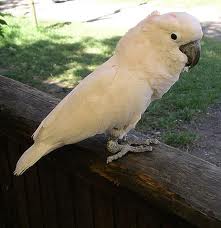
PARROT RESCUE
COCKATOO
Many people who get cockatoos do not realize how demanding a cockatoo is, and soon become frustrated with them, leading up to the people either getting rid of the cockatoo or neglecting the cockatoo.
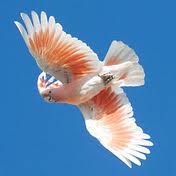
Cockatoos are extremely affectionate, their feathers are very soft and they have beautiful colors!
A Very Loud Parrot!!!
| HOME |
|---|
| SPECIES |
| REHOMING |
| LOST |
| FOUND |
| LINKS |
| FOR SALE |
| EMERGENCY |
| HELP |
There are many different types of cockatoos.
- The sulphur-crested cockatoo is white with a yellow crest.
- The Red-tailed Black Cockatoo is black with a red tail while the Yellow-tailed Black Cockatoo is black with a yellow tail.
- The cockatiel is the smallest of the cockatoos, and in its natural state is essentially grey with yellow bars on its tail and red cheek patches.
- The galah is another small cockatoo which is pink and grey, as is the Gang-gang cockatoo.
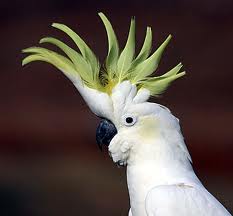
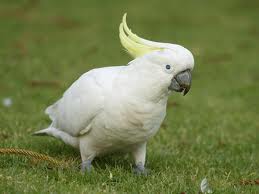
DIET & NUTRITION
A variety of food is essential for providing the best possible care for your parrot.
A pellet based diet is the best thing for your parrot but this must be supplimented with foods like:
Carrots, Broccoli (calcium),Peppers, Celery, Cucumbers and Leaf lettuce (not iceburg)
Melons, Kiwi, Grapes, Oranges and Berries
Meat can also be eaten especially chicken, Beef and Pork should be given less often
No No Foods
Alcohol, Coffee and Caffein, Chocolate, Avocado, Mushrooms, Onions, Rhubarb and High Fat foods
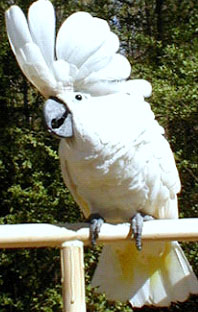
HEALTH AND BEHAVOIR
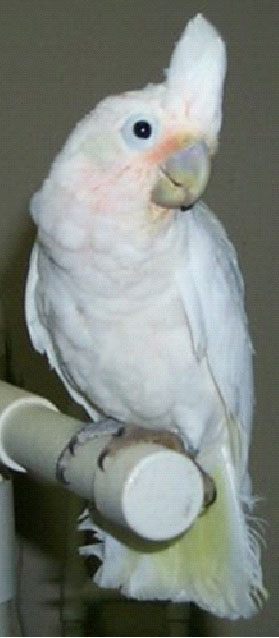
CAGE
- For cockatoos, the larger the enclosure you can provide, the better. The ideal size of any bird cage should be equal to at least 3 flight wingspans of the bird. Anything smaller is detrimental to the bird unless it has freedom outside the cage. A minimum size cage to house a small cockatoo is 27" x 27 " x 39" (70x70x100 cm), which should then be accompanied with regularly outside time for the bird to exercise. For larger cockatoos a larger cage must be considered.
Horizontal bars are important as your cockatoo needs to climb. Keep in mind that because of the strength of their beaks, cockatoos are able to bend bars and pop the joints on cages. For additional security on the cage door, a snap lock is recommended.
- Bird Perch:
Provide one or two perches about 3/4' in diameter and dishes hanging from the side for feed, water, and grit. Try to place the perches away from dishes so the food and water dish do not become soiled with bird droppings. Do not use plastic because your bird will chew and break the plastic and it can become hazardous.
- Where to Place Bird Cages:
Your cockatoo is very social and inquisitive, so the room you house your pet in must be a room that gets visited frequently by the family. Place the cage at eye level in a quiet sunny area away from drafts.
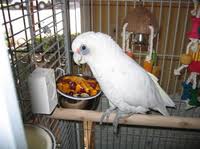
Change and rotate the toys every two weeks or so to help keep your Cockatoo active and interested. When introducing a new toy, do it slowly. If introduced too quickly, the Cockatoo will tend to shy away and very possibly never play with it. If the toy has never been in their cage and / or play top area, make sure they see you playing with it before attaching. Their natural curiosity and wanting to see everything and know all that's happening will encourage them to come check out the new toy with you.
Toys help keep our Parrots happy, healthy and curious. Let's hear it for toys!
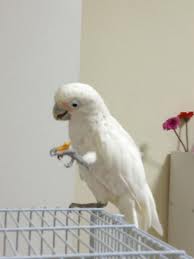
TOYS
Bird toys play a large part in the well-being of your pet bird. A bird without toys is deprived of the stimulation that it needs to stay psychologically healthy. Toys are not an accessory they are a necessity! Cockatoos love toys! They provide exercise and busy work for them. Cockatoos require many forms of social activity. Bored cockatoos will scream, pluck their feathers and can become depressed. Birds are very active and busy in the wild. So as your pet they depend on you to provide fun activities such as chewing and shredding. Providing such activities for busy beaks is a never ending challenge. Birds enjoy chewing and destroying things plus it keeps their beaks in good condition and also exercises their powerful facial muscles! Cockatoos enjoy colorful and fun toys to chew and shred. Toys with lots of color, chewable parts, knots to untie, and various textured parts work best. Always make sure the parts are all bird safe:
- Cotton rope should be 100% natural, unbleached and not cordage
- Any coloring should be non-toxic
- Metal parts should be stainless steel or nickel plated steel
- Wood should be natural & untreated
- Leather should be vegetable tanned & untreated
Rotating toys is important. Move toys around in the cage to different areas to keep them interested. Adding new toys weekly keeps cockatoos stimulated. If they become bored with a toy they may move on to plucking their own feathers! A variety of shapes and materials should satisfy these inquisitive birds. Destroying a toy gives them something to do and deters them from becoming bored. Offer as many different types of toys as possible and rotate often.
As toys are being rotated, they should be washed and clean before they are put in the new location. Some cockatoos like when you play with the toy and show them the moveable parts. If you make it look fun they usually follow your lead and play like crazy!
